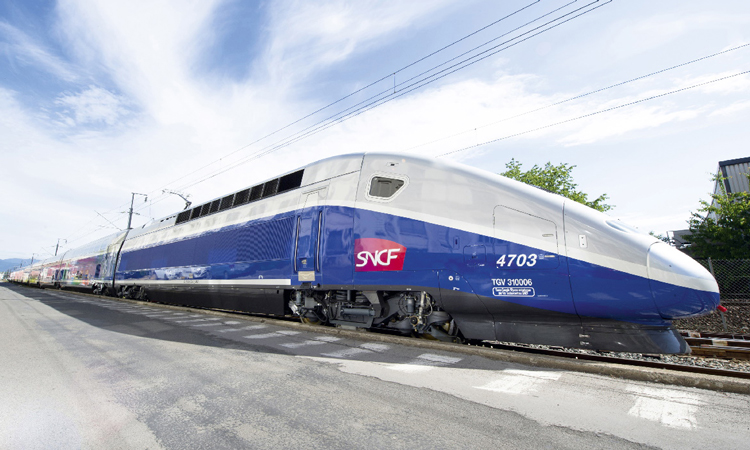Renfe-SNCF high-speed travel enables significant emission reductions
Posted: 6 March 2020 | Global Railway Review | 1 comment
In six years of operation, the Renfe-SNCF high-speed train service between Spain and France has enabled half a million tonnes of carbon emission reductions.


Credit: Renfe-SNCF
Since beginning operation in 2013, over five million passengers have travelled on a Renfe-SNCF in Cooperation high-speed train service between Spain and France. In total, the trains have made over 22,000 trips, covered 3.2 million kilometres and allowed for a saving of half a million tonnes of CO2 – the equivalent of the average annual emissions from electrical consumption by a city of two million inhabitants.
On the four routes that Renfe-SNCF in Cooperation operates, 52 per cent of passengers are domestic travellers – 31 per cent of the travellers are French residents and 21 per cent Spanish – and 47 per cent are passengers travelling internationally.
When including domestic travellers utilising Renfe-SNCF in Cooperation’s services in France and Spain, the figures increase, approaching one million tonnes of CO2 saved – corresponding to the average annual emissions from electrical consumption by a city of 3.7 million inhabitants.
Join our free webinar: Rail cyber-security in a time of technological and regulatory transformation
Join our expert panel, including speakers from Nokia and Siemens Mobility, to explore the critical convergence of cybersecurity and 5G rail comms.
Date: 3 Dec | Time: 15:00 GMT
Can’t attend live? No worries – register to receive the recording post-event.
The rail industry is currently witnessing a culture shift, with society becoming increasingly committed to doing what is best for the environment – a prime example being global movements such as tagskyrt (proudly travelling by train), highlighting how train travel is the most sustainable mode of transportation.
Renfe-SNCF in Cooperation’s commitment to implementing sustainable measures in favour of the environment and responsible tourism is clear. Each of the high-speed trains operating along lines between Spain and France utilise renewable electrical energy and have a low carbon footprint – every 100km travelled by train enables an emission reduction of approximately 15kg of CO2.
As a result of these commitments and developments, a plane or car journey made from Barcelona to Paris generates 120kg more CO2 than the equivalent journey by train, causing a 10 times greater greenhouse effect.
Stay Connected with Global Railway Review — Subscribe for Free!
Get exclusive access to the latest rail industry insights from Global Railway Review — all tailored to your interests.
✅ Expert-Led Webinars – Gain insights from global industry leaders
✅ Weekly News & Reports – Rail project updates, thought leadership, and exclusive interviews
✅ Partner Innovations – Discover cutting-edge rail technologies
✅ Print/Digital Magazine – Enjoy two in-depth issues per year, packed with expert content
Choose the updates that matter most to you. Sign up now to stay informed, inspired, and connected — all for free!
Thank you for being part of our community. Let’s keep shaping the future of rail together!









I suspect that the discontinued Paris-Barcelona and Paris-Madrid sleeping car services were even more fuel efficient, and therefore less carbon-dioxide producing. But I guess these were considered less “high-tech” and so were discontinued. Unfortunate, as these were one of the best rail travel experiences available in Europe.